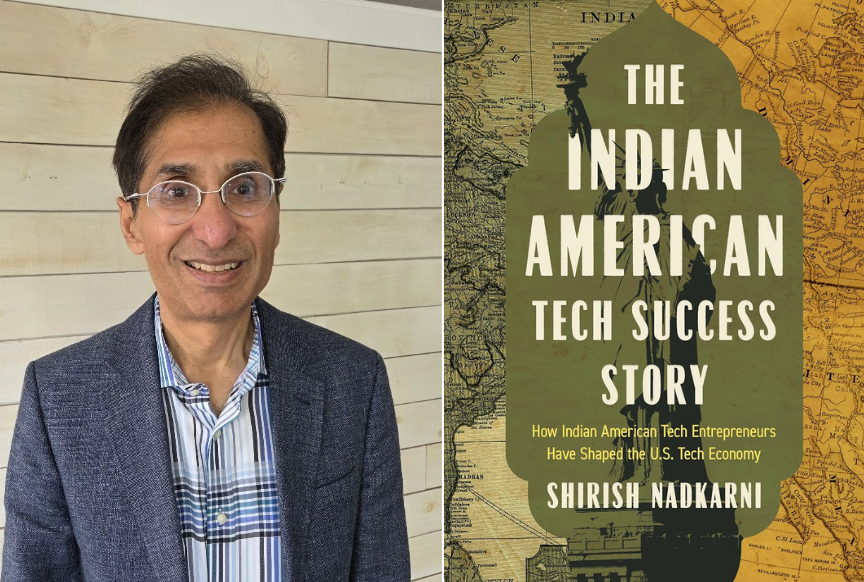Immigrant Entrepreneurs: America’s Innovation Engine Under Threat
In a concerning development for the U.S. tech industry, a recent executive order imposed a staggering $100,000 fee on new H-1B visa applications, reigniting the debate about the role of skilled immigrants in American innovation. This policy shift comes at a critical moment when the stories of immigrant entrepreneurs, particularly from India, highlight how vital international talent has been to America’s technological leadership. Shirish Nadkarni, a Microsoft veteran and successful entrepreneur whose startups were acquired by BlackBerry and Rosetta Stone, explores this relationship in his new book, “The Indian American Tech Success Story.” As someone who immigrated from India decades ago, Nadkarni provides a personal perspective on how immigrant founders have become one of America’s greatest economic assets, creating companies, jobs, and technological breakthroughs that might not otherwise exist.
The current tension over immigration policy stands in stark contrast to earlier, more welcoming approaches that helped build America’s tech dominance. Nadkarni points to the transformative Hart-Celler Act of 1965 as a pivotal moment that opened doors for skilled immigrants from previously excluded countries like India and China. This progressive legislation coincided with the birth of the modern tech industry and institutions like the Indian Institutes of Technology (IITs), creating a powerful talent pipeline. These immigrants didn’t simply fill jobs—they created entirely new industries, founded groundbreaking companies, and developed technologies that transformed how we live and work. Silicon Valley itself, the global epicenter of innovation, was substantially built and shaped by this wave of international talent. Many of today’s most valuable companies and technological breakthroughs can trace their origins to founders or key contributors who came to America seeking opportunity and brought their skills, determination, and fresh perspectives.
The stakes in this debate extend far beyond immigration policy—they touch on America’s ability to maintain its technological edge, particularly in strategic areas like artificial intelligence. As Nadkarni pointedly asks, “How are we going to compete with China if we don’t take advantage of the best talent around the world to help us?” This question cuts to the heart of the matter: in a global race for technological supremacy, can the United States afford to close its doors to the world’s brightest minds? The evidence suggests that immigrant entrepreneurs don’t simply contribute to the American economy—they often create entirely new sectors, technologies, and opportunities that benefit everyone. Many studies have shown that immigrants are disproportionately likely to start businesses, file patents, and create jobs. Far from taking opportunities from native-born Americans, these entrepreneurs frequently expand the pie, creating new possibilities that wouldn’t otherwise exist.
The current system has significant structural problems that already limit America’s ability to attract and retain international talent. Nadkarni highlights the green card backlog for Indian applicants—currently more than a decade—as a major deterrent for potential immigrants. This bottleneck has already discouraged many IIT graduates from pursuing careers in the United States, potentially redirecting this talent to competitors like Canada, Australia, or even back to rapidly developing countries like India itself. The solutions Nadkarni proposes are pragmatic: a dedicated startup visa program that would allow entrepreneurs to build companies in America, elimination of country-specific caps in the green card system, and a more streamlined path to permanent residency for those with valuable skills. These reforms would recognize the reality that in the modern knowledge economy, human capital is often the most valuable resource of all.
While Nadkarni hopes the new H-1B fee will be successfully challenged in court, he acknowledges that the broader debate around immigration reflects genuine concerns and competing values. Some Americans worry about job competition or cultural change, while others see immigration as fundamental to American identity and economic vitality. What often gets lost in this debate, however, is the specific impact of high-skilled immigration and entrepreneurship—a phenomenon that has repeatedly proven to be a net positive for American innovation, job creation, and economic growth. The stories Nadkarni tells in his book aren’t just about individual success; they’re about how these immigrants have helped build companies and technologies that employ thousands of Americans and generate billions in economic activity. They reveal how diversity of background and perspective often leads to more creative solutions and new approaches to persistent problems.
Despite the current challenges, Nadkarni remains optimistic about America’s innovative future. “We have the best minds in the world,” he notes, expressing confidence that talented individuals will “continue to find a way to come and contribute to the U.S. economy, and we will continue to have really great startups.” This optimism reflects both the enduring appeal of the American dream and the resilience of the entrepreneurial spirit. Throughout its history, the United States has renewed itself through the contributions of newcomers who bring energy, ideas, and determination. The current debate over skilled immigration isn’t just about visa fees or quotas—it’s about whether America will continue to be the place where the world’s dreamers and builders come to create the future. As artificial intelligence, quantum computing, and other transformative technologies reshape our world, the countries that can attract and empower the best minds will likely define the next century of human progress. America’s historical openness to talent has been one of its greatest competitive advantages—a tradition that seems more valuable than ever in today’s knowledge-driven global economy.


